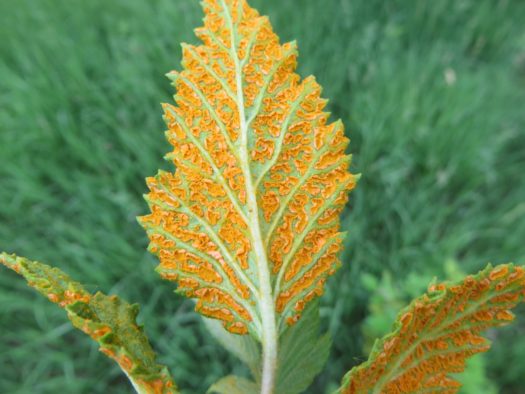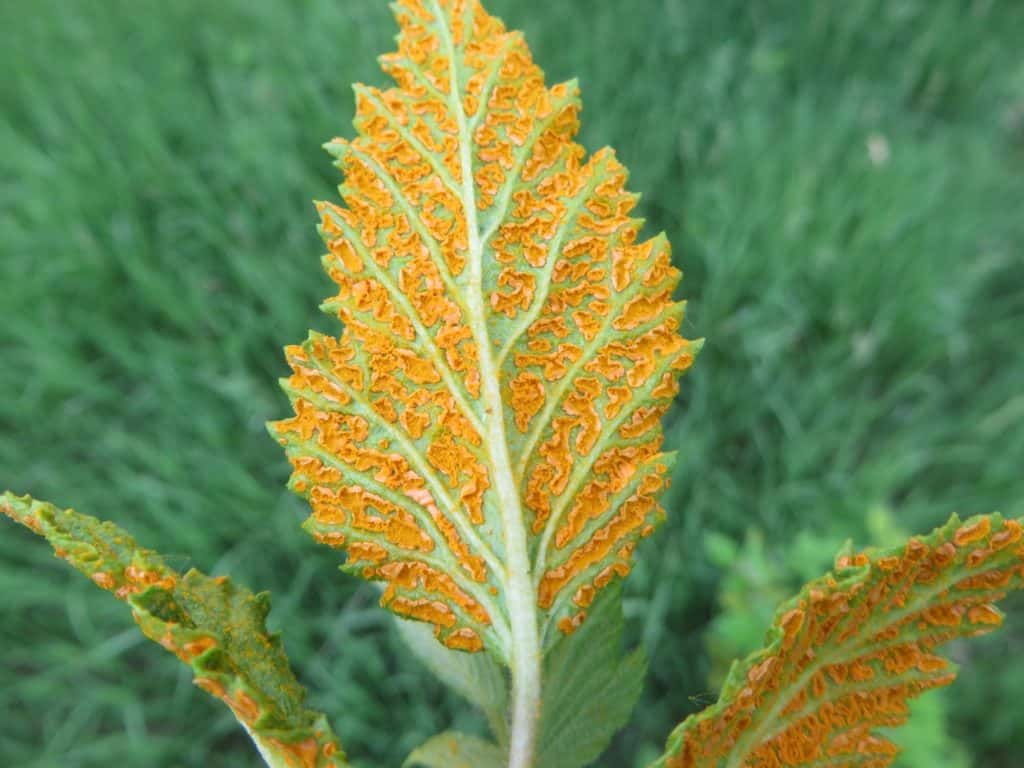
Brambles, like blackberry and raspberry, are a great backyard fruit crop for Kentucky gardeners. Generally speaking, diseases are not a big issue on brambles, but one pest to watch for is Orange Rust. The first symptoms are often noticed in early spring when newly formed shoots appear weak and spindly. As they emerge, leaves may yellow and distort. Orange pustules develop on the undersides of leaves, eventually covering the surface and causing leaves to drop readily. Shoot tips and buds may also be infected. Once infected, the pathogen spreads throughout the entire plant.
While orange rust is unlikely to kill brambles, it reduces vigor significantly and results in lower yields. Infected plants should be removed to reduce disease spread. Thorny and thornless blackberries, as well as black and purple raspberries, are susceptible. Red raspberries are not known to be infected.

Disease development favors cool, moist periods. Infection may occur throughout the growing season, as long as conditions are conducive. The pathogens survive winter in infected plant tissues like canes and roots.
There are no recommended fungicides for control of orange rust as they do not adequately control the pest. Instead cultural management actions such as removal of infected plants (including roots) is recommended. When planting new brambles make sure the new plants are disease-free. Orange rust can also survive on wild blackberries so remove and destroy any that are growing close to your garden.
—- Kelly Jackson, Christian County Extension Agent






